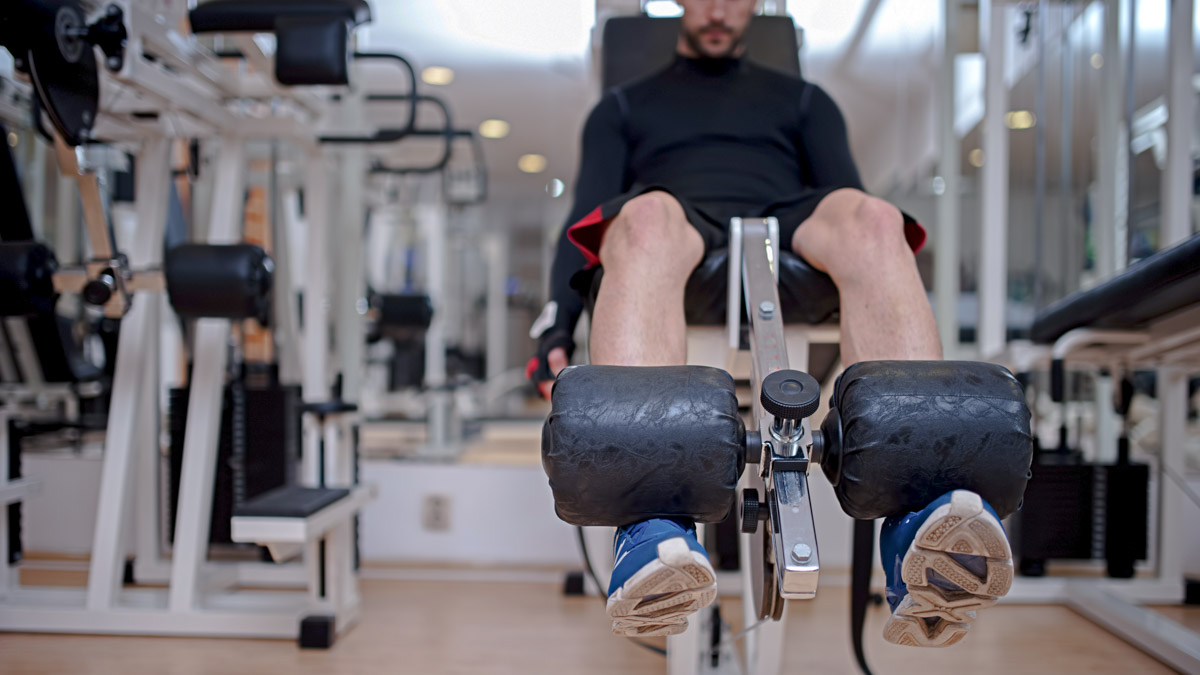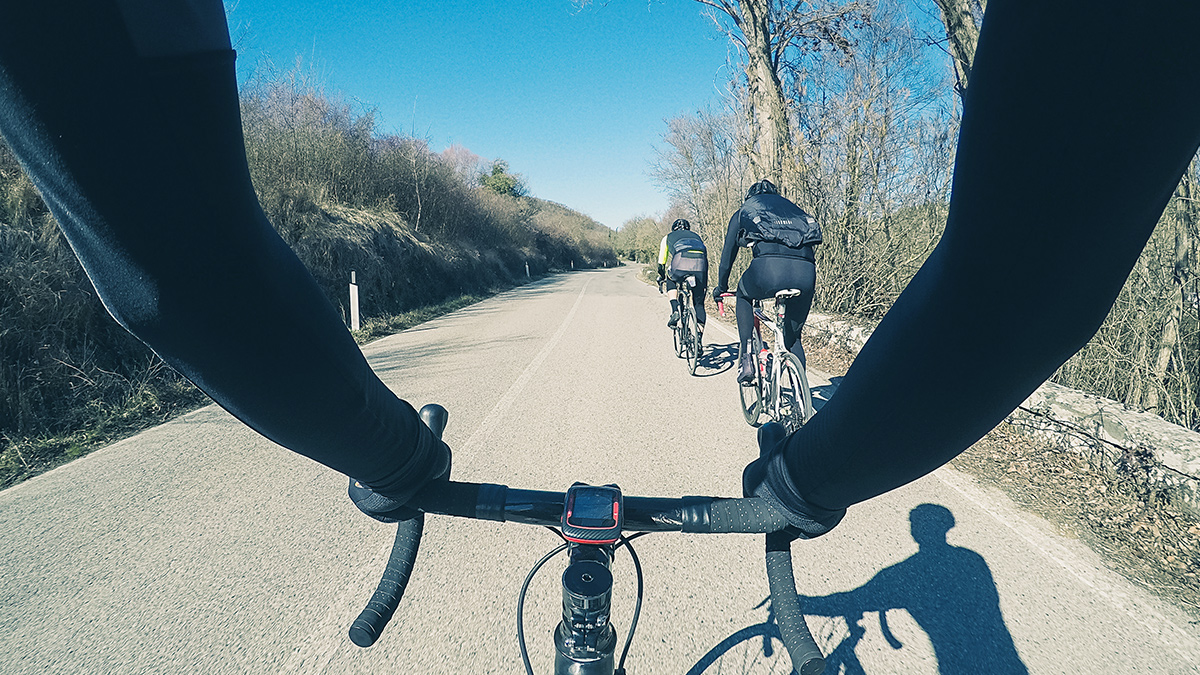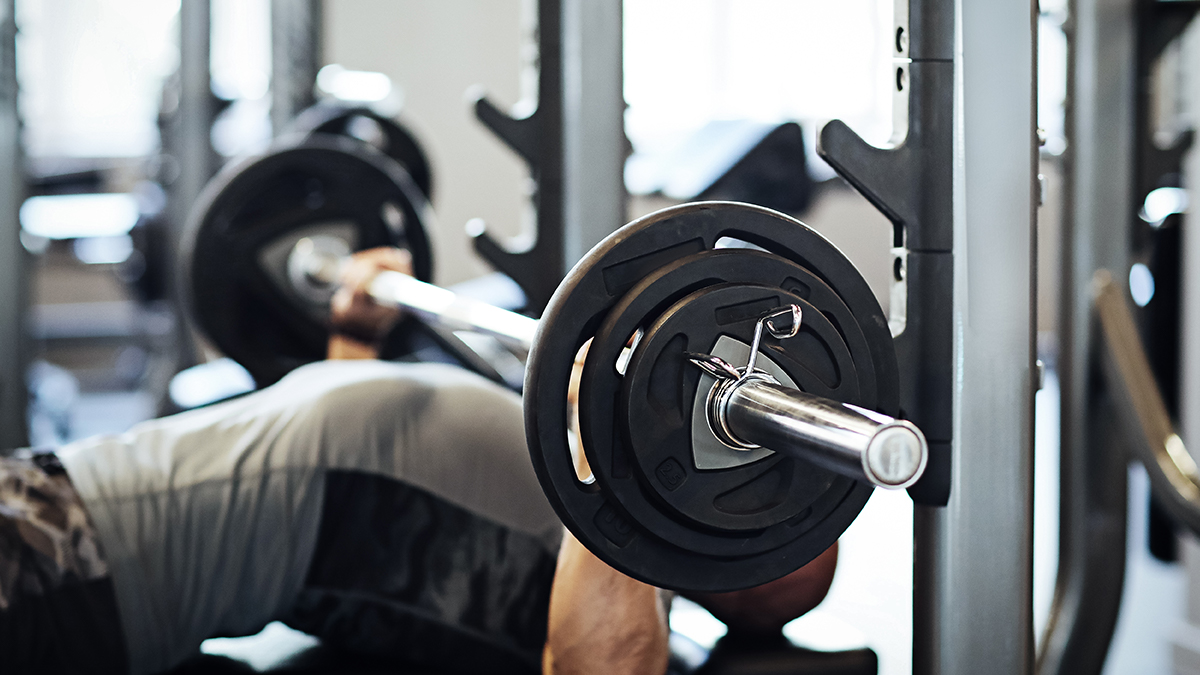In recent years, gym work and high-intensity interval training (HIIT) have become popular ways to train in the winter, and it’s not hard to see why. Strength training has profound benefits for your performance, and with short days and cold weather, the gym provides a safe haven from the elements. Add to that the advent of virtual cycling platforms and smart trainers, which lend themselves easily to HIIT workouts, and many cyclists may find themselves combining both modes of training.
However, combining both HIIT and gym work in the off-season must be done in the right way. Proper programming of these methods can lead to better performance in your workouts and greater training adaptations—but if not done properly, you will increase your chances of burnout or injury. In fact, many athletes will be better off forgoing large volumes of HIIT in favor of strength-focused “gym blocks.”
This article will focus on how you can best program your training in order to maximize the many benefits of strength training.
Why HIIT Cycling and Strength Training Aren’t Compatible
While both HIIT and strength training have great performance benefits, they work completely different systems of your body. In terms of the muscle, endurance training works by increasing the mitochondrial density and capillaries surrounding the active muscle. When endurance training alone is performed, the body responds by actually decreasing the size of the muscle. This decrease in muscle size is one of the mechanisms that mitochondrial density is increased. Conversely, strength training works by increasing the size and strength of the muscle.
Both strength training and HIIT also work by converting your quick fatiguing Type IIx fibers to more fatigue-resistant Type IIa fibers. However, strength training has been shown to convert muscle fiber types to a much higher extent than endurance training alone.
When you strength train, your body will signal the mTOR enzyme in order to stimulate muscle adaptation. Conversely, the high energy output of endurance training activates the AMPK enzyme to break down cells and maintain energy levels during times of low nutrient availability. Both the AMPK and mTOR pathways have been shown to “fight” with one another. The more intensely you ride, the higher the likelihood that AMPK activation will inhibit the mTOR pathway. In other words, when both modes of training are performed simultaneously, strength gains from the gym can become blunted, and muscle growth is lessened. The more intensely you train on the bike, the more likely you are to see this blunted response in the gym.
Additionally, performing large volumes of work in the gym and while doing intense training on the bike can cause a large spike in cortisol, a catabolic hormone usually associated with overtraining. When cortisol levels become high, they will also inhibit the anabolic mechanisms that allow your body to create new muscle and become stronger.
How to Keep Your Cycling and Strength Workouts Compatible
Since we want to maximize the short window of the offseason to reap the benefits of the gym, it’s important to think about what training we’re doing on the bike and how that affects the big picture. Here’s what you can do to maximize strength gains in the gym to complement your cycling.
Keep Intensity Low on the Bike
Now, this doesn’t mean that you can’t or shouldn’t ride; but you should think twice about hitting up that Zwift race or group ride during your gym block. The higher intensity your sessions are during this time period, the more likely the training stress will inhibit strength adaptations in the gym.
Instead, focus on accumulating time in lower-intensity zones, which will help to prevent overtraining. Sub-threshold low cadence intervals and even some sprints can help to provide an excellent stimulus that will help to transfer the gains you make in the gym to the bike.
This gym-block should be done in the early winter, so remember there is plenty of time for race-specific intervals closer to the season. Keep your bike training low-key during this time to set yourself up well when on-the-bike training becomes your main focus.
Think Day-to-Day
It’s also important to think about the day-to-day planning of your bike and gym sessions. Doing harder or longer bike sessions on the same day that you go to the gym may inhibit strength gains. This could be due to the acute response in catabolic hormones and also lower energy availability due to the high caloric cost of endurance training.
As such, it’s a good idea to program your harder rides on days the days that you’re not in the gym. A good example of this would be to go do your gym sessions during the workweek while going for your longer/harder rides on the weekend. If you do happen to have an intense bike session and a gym workout on the same day, going to the gym before riding will help you to perform better and decrease your risk of injury.
Consider Your Nutrition
Naturally “skinny” athletes who find it difficult to build and maintain muscle mass, as well as master’s athletes who are combating the effects of age-related muscle loss (sarcopenia), need to ensure adequate nutrients to help build muscle during gym-focused training.
The previously mentioned mTOR pathway that signals the body to create new muscle tissue is triggered in response to resistance exercise and the availability of certain amino acids. Current research shows that the amino acid leucine is the most effective at signaling the mTOR pathway. Leucine is found in most protein sources, but whey and soy protein have the highest concentrations. Supplementing with whey or soy protein after a gym workout will help to maximize muscle growth.
Make sure that you are well-fueled with both carbohydrates and protein before and after your workouts. Adequate energy availability is important to make sure that anabolic processes are taking place in your body.
Those who may suffer low energy availability (LEA) have been shown to have decreased levels of testosterone and growth hormone, which will limit training adaptations. If you are training hard on the bike and in the gym, it’s important to keep an eye on how many calories you’re taking in. Calorie tracking is a good way to make sure that you’re giving your body what it needs.
When and for How Long Should I Do Each Workout?
The best time to do “gym-focused” training is in the early stages of the offseason. During this time period, big race objectives are usually many months away and there is no need to be doing large volumes of HIIT. Most athletes, especially those who have not strength trained before, will see far more gains from doing gym-focused training during this period than by doing lots of HIIT.
How long should you do gym-focused training? It depends. Typically this period will last 2-4 months. Going to the gym 3 times per week is optimal. If you haven’t done any gym work before, this period will usually last longer because it will take more time to safely progress to higher loads and because you will have a lot more potential for performance improvement.
The later on in the year your “A” races are, the longer you can have a gym-focused training block. If you’re planning to peak in February, then the gym-focused block may be quite brief as you will need to focus on on-the-bike training to be ready. If your big races won’t come until July, then this period can be quite a bit longer.
While all athletes should strength train, master’s athletes will see perhaps the most benefit from gym-focused training. Due to sarcopenia, aging athletes begin to lose their Type II fast-twitch muscle fibers. Lots of masters races are fairly short and explosive, which means they rely heavily on these fast-twitch fibers. Gym-focused blocks will help you to maintain that explosivity and will help you to remain competitive for many years to come.
As the race season approaches, you will begin to focus more on the bike. But it is still a good idea to maintain strength training year-round. During normal training blocks, 1-2 days should be spent in the gym to maintain the winter gains.
During taper periods and extremely high training loads (training camps, etc..) the gym can be phased out periodically. Conversely, some athletes may find it useful to return to a gym “mini-camp” for a few weeks mid-season to help max out the gym adaptations.
A gym-focused block during the winter will improve your work capacity when you begin to transition to bike-focused training. You will also have laid a foundation for a healthy and injury-free season to come. Just make sure to plan your gym workouts to fit in with your cycling in order to maximize the benefits of each.
References
Aagaard, P. et al. (2011, March 1). Effects of Resistance Training on Endurance Capacity and Muscle Fiber Composition in Young Top-Level Cyclists. Retrieved from https://pubmed.ncbi.nlm.nih.gov/21362056/
Haff, G.G. & Triplett, N.T. (2016). Essentials of Strength Training and Conditioning. Human Kinetics.
Kim, J. et al. (2011, January 23). AMPK and MTOR Regulate Autophagy through Direct Phosphorylation of Ulk1. Retrieved from https://pubmed.ncbi.nlm.nih.gov/21258367/
Kraemer, W.J. et al. (1995, March). Compatibility of High-Intensity Strength and Endurance Training on Hormonal and Skeletal Muscle Adaptations. Retrieved from https://pubmed.ncbi.nlm.nih.gov/7775344/
Rønnestad, B.R. & Mujika, I. (2013, August 5). Optimizing Strength Training for Running and Cycling Endurance Performance: A Review. Retrieved from https://pubmed.ncbi.nlm.nih.gov/23914932/
Sale, D.G. et al. (1990, June). Comparison of Two Regimens of Concurrent Strength and Endurance Training. Retrieved from https://pubmed.ncbi.nlm.nih.gov/2381303/









